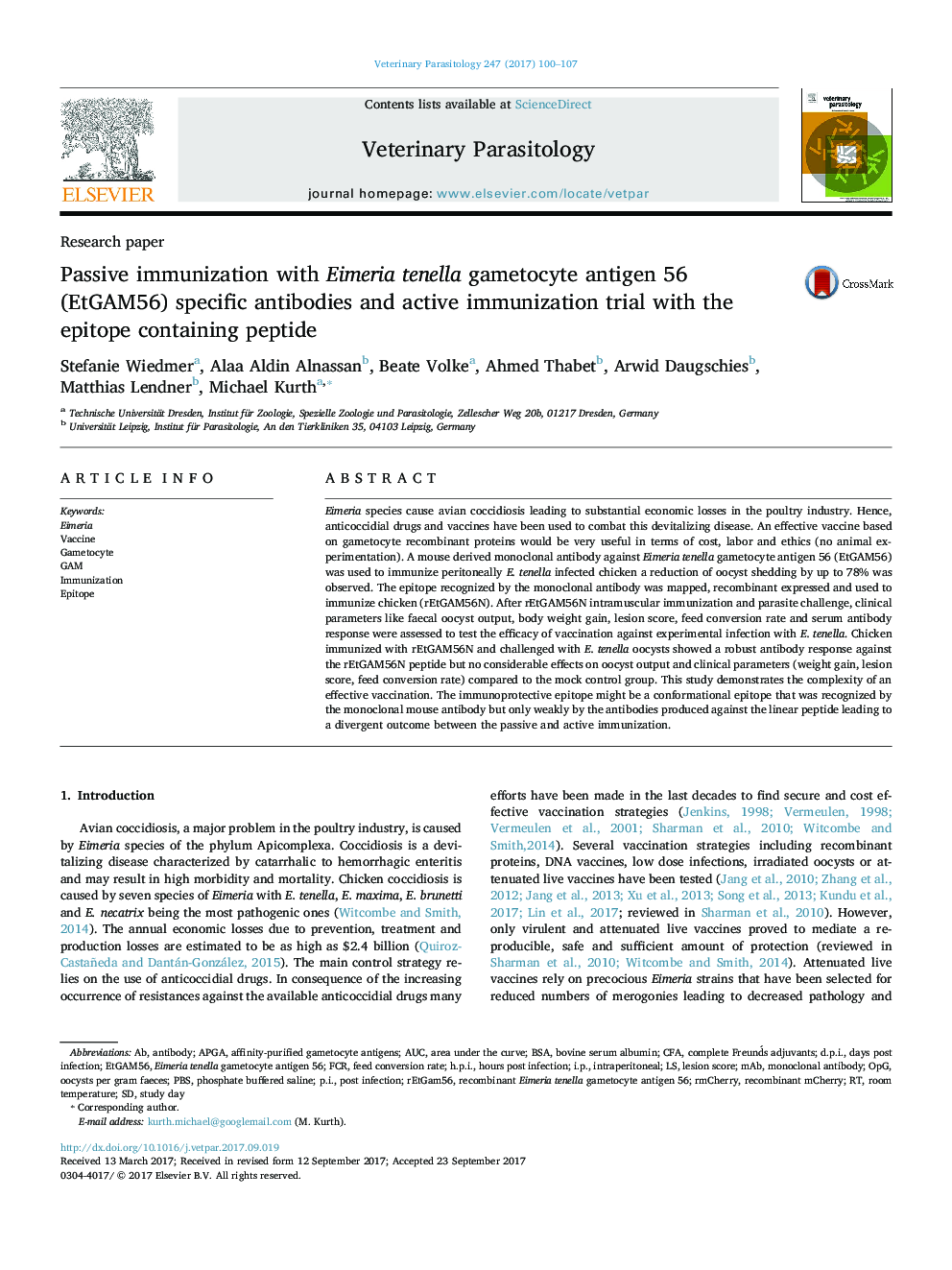| Article ID | Journal | Published Year | Pages | File Type |
|---|---|---|---|---|
| 5545533 | Veterinary Parasitology | 2017 | 8 Pages |
â¢Passive immunization of chicken with a monoclonal antibody (mAb E2E5) against Eimeria tenella gametocyte protein (EtGAM56).â¢Following infection with Eimeria tenella, E2E5-vaccinated chicken showed reduced faecal oocyst output by up to 78%.â¢Determination of the mAb E2E5 epitope within EtGAM56N-terminus (EtGAM56N).â¢EtGAM56N was cloned, heterologously expressed and tested for immunization efficacy against infection with E. tenella.â¢rEtGAM56N immunization and parasite challenge was associated with an antibody response and a lack of immune protection.
Eimeria species cause avian coccidiosis leading to substantial economic losses in the poultry industry. Hence, anticoccidial drugs and vaccines have been used to combat this devitalizing disease. An effective vaccine based on gametocyte recombinant proteins would be very useful in terms of cost, labor and ethics (no animal experimentation). A mouse derived monoclonal antibody against Eimeria tenella gametocyte antigen 56 (EtGAM56) was used to immunize peritoneally E. tenella infected chicken a reduction of oocyst shedding by up to 78% was observed. The epitope recognized by the monoclonal antibody was mapped, recombinant expressed and used to immunize chicken (rEtGAM56N). After rEtGAM56N intramuscular immunization and parasite challenge, clinical parameters like faecal oocyst output, body weight gain, lesion score, feed conversion rate and serum antibody response were assessed to test the efficacy of vaccination against experimental infection with E. tenella. Chicken immunized with rEtGAM56N and challenged with E. tenella oocysts showed a robust antibody response against the rEtGAM56N peptide but no considerable effects on oocyst output and clinical parameters (weight gain, lesion score, feed conversion rate) compared to the mock control group. This study demonstrates the complexity of an effective vaccination. The immunoprotective epitope might be a conformational epitope that was recognized by the monoclonal mouse antibody but only weakly by the antibodies produced against the linear peptide leading to a divergent outcome between the passive and active immunization.
